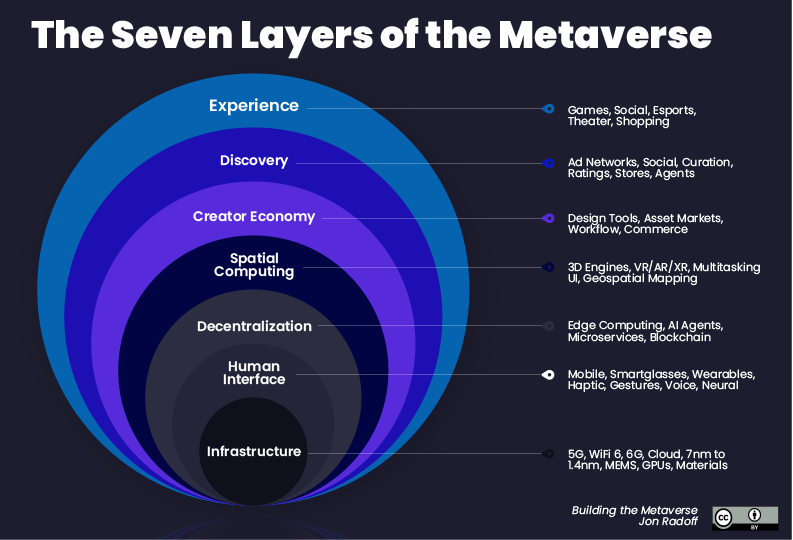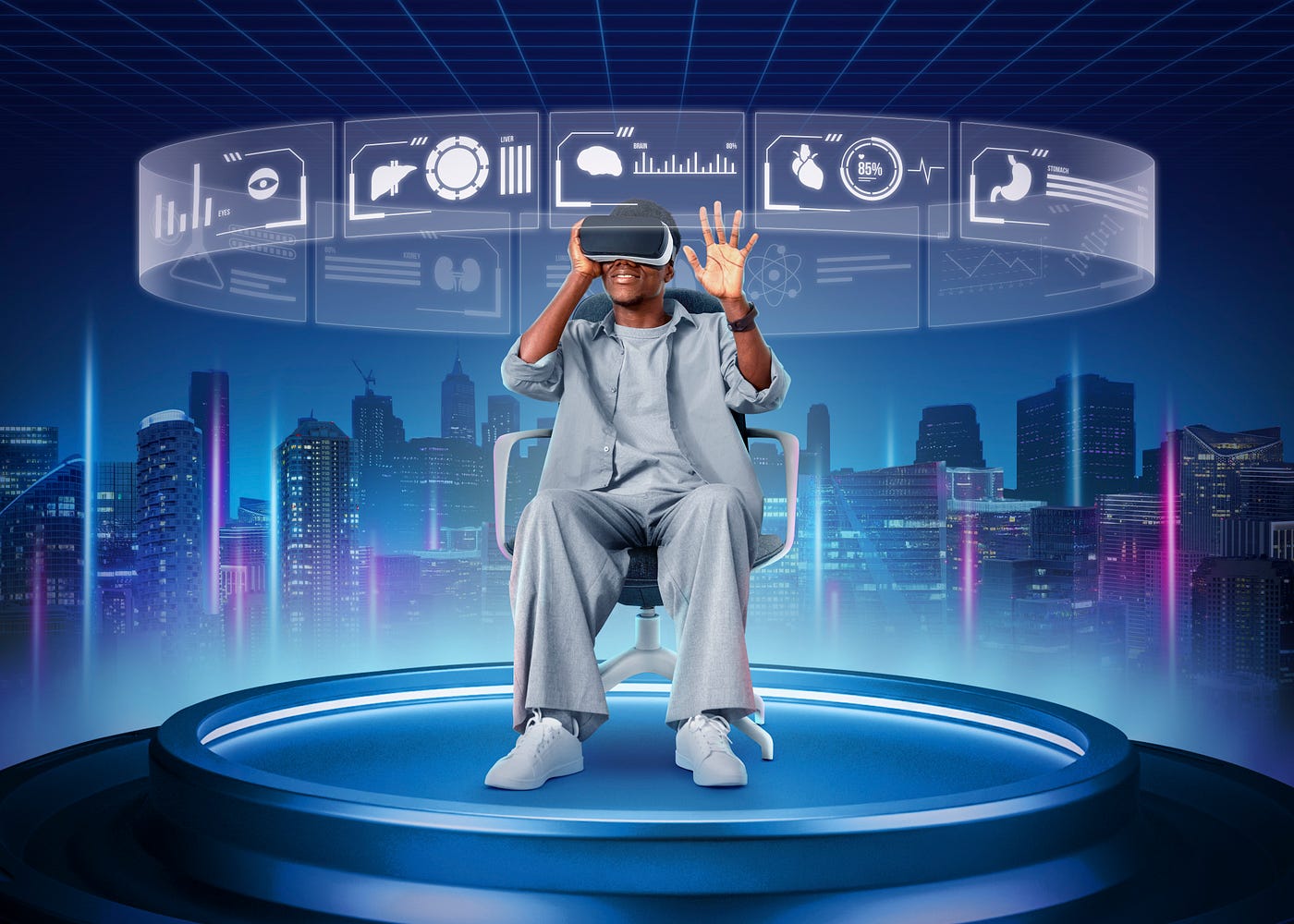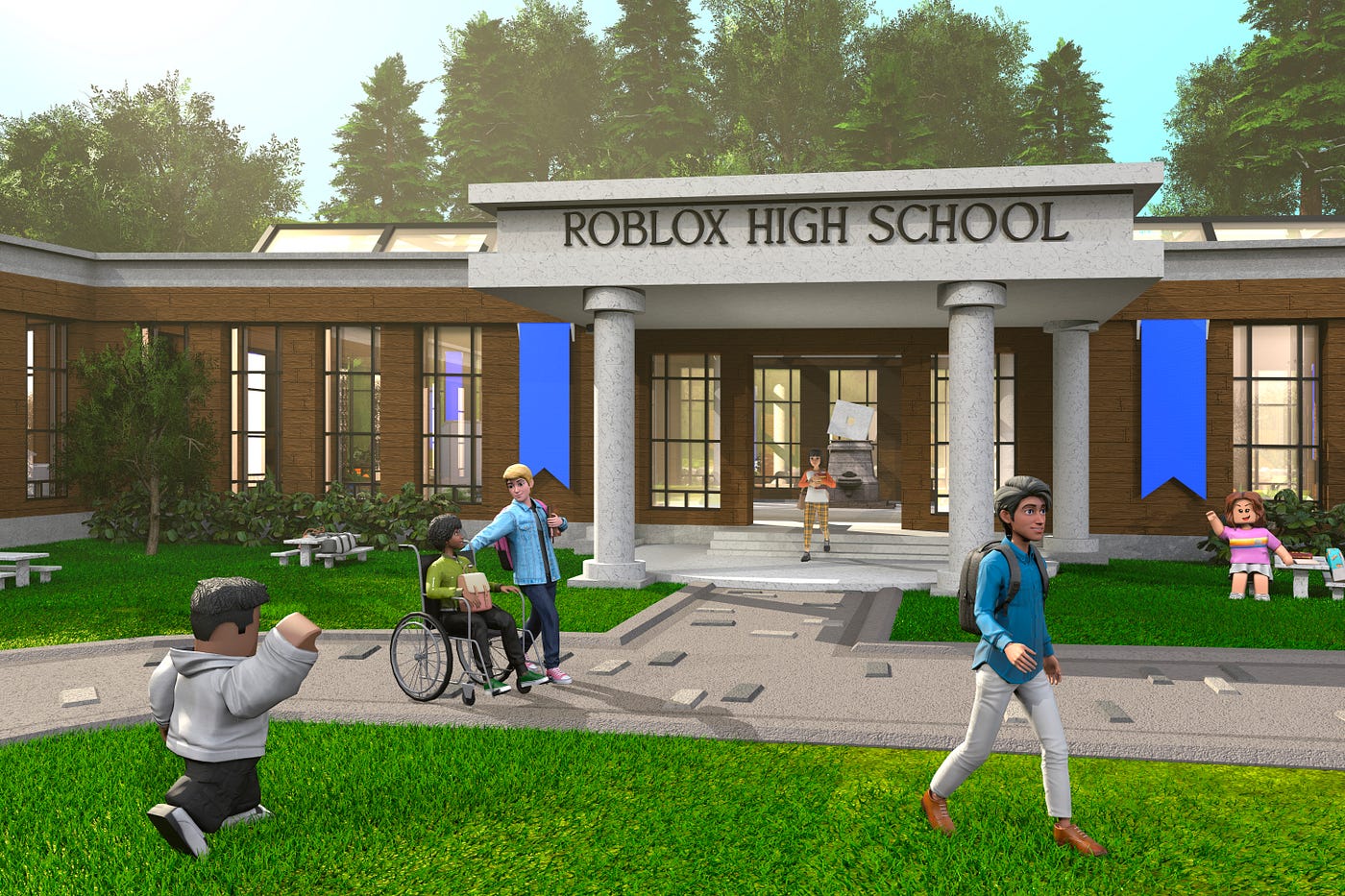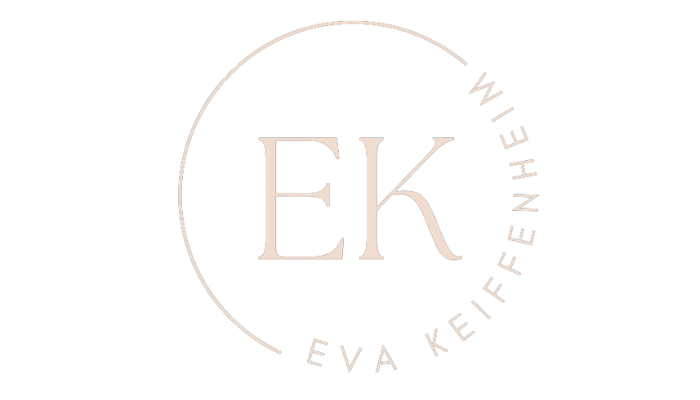
A Comprehensive Metaverse x Learning Guide For Curious But Busy People
Research-based predictions for a soon-to-be reality.
Have you ever wondered how the metaverse might shape the future of education and learning?
Trying to find answers can be frustrating. While there’s much writing on the metaverse, most of it lacks substance. Unless you’ve got time for thorough research, finding no-fluff scenarios is a challenge.
But don’t worry, I’ve got you.
As a teacher-turned-writer, I have the time to follow metaverse rabbit holes so that you don’t have to. In the past weeks, I read everything I could find on the topic (I even visited a web3 exhibition in New York).
This comprehensive guide is a no-fluff, distilled version of what I learned about the metaverse and its impact on education and learning.
The article will help you understand what the metaverse is (1), how it might — or might not — disrupt learning (2), companies worth knowing (3), and what is required to build a great metaverse for all (4).
Table of Contents
- The Metaverse is More Than Meta
- A brief history of the metaverse
- How tech leaders define the metaverse
- Can the Metaverse Do What EdTech Failed to Do?
- Doing the Same, Only Better
- Disrupting How We Learn
- These Companies Are Already Disrupting Learning
- Roblox
- Labster
- FundamentalVR
- Talespin, Mursion, and Unimersiv
- Prerequisites for Building Something Great
- Diverse content development teams
- Hardware access for all learners
- Governance to ensure privacy, safety and security
- Conclusion
1) The Metaverse is More Than Meta
Since Mark Zuckerberg’s presentation in October 2021, the metaverse has been on most people’s radars. But what many don’t know is that there won’t be just one metaverse.
Here’s a brief history of the metaverse, as well as the current definition of what it actually is.
1.1) A brief history of the metaverse
The term metaverse first appeared in Neil Stevenson’s 1982 novel Snow Crash and referred to a hellscape of corporate control.
At the time, Stevenson wrote, “the people are pieces of software called avatars. They are the audiovisual bodies that people use to communicate with each other in the metaverse.”
Since then, different companies have started to develop and build on metaverse technology. For example, they have introduced VR machines, glasses, and applications long before Facebook’s metaverse (for example, IKEA’s place app in 2017).
1.2) How tech leaders define the metaverse
Since Stevenson’s novel, the understanding of the metaverse has shifted. Cathy Hackl, an expert on web3, asked 20 tech leaders how they’d explain the metaverse.
In essence, what they said is that the metaverse will bridge the gap between reality and a virtual world by relying on technologies such as virtual reality (a full immersion in virtual environments, e.g., through a VR headset) and augmented reality (the real world enhanced with virtual objects, e.g., through your phone).
The Metaverse is the internet, but you can go into it (VR) or it can come out to you (AR). As with any new technology we invent, there will be unintended consequences which require us to stop and think ‘What is the future we all want to see?
Alan Smithson
Experts are predicting several use cases, including virtual retail venues for shopping, virtual co-working spaces, advertising channels for brands, fitness and telehealth hubs, social gaming platforms, space for global convenings, and even digital lecture halls.
Yet, tech leaders agree that we’re still far from the metaverse becoming our new reality. We’re still in the early stages of development.
Eric Hazan, one of the lead authors of a McKinsey report on the metaverse, writes: “There’s a lot of excitement about the potential this technology holds, but the computing power isn’t there yet to make the metaverse of people’s imaginations feasible.”
For instance, the graph below shows the different layers needed to unlock the metaverse’s potential. As you might notice, we’ve barely unlocked each stage.

But supposing we had the sufficient infrastructure, human interfaces, and enough computing power, what would the actual predictions for the metaverse’s impact on learning in future scenarios be? And can the Metaverse achieve EdTech’s promise?
2) Can the Metaverse Do What EdTech Failed to Do?
Analyzing the past twenty-five years of education technology, you’ll realize that EdTech often has over-promised but under-delivered.
Massive Open Online Courses scaled traditional chalk and talk settings, and you can now learn from the best experts on MasterClass. However, despite the high-quality videos, the format remains painfully static. Even though learning science revealed the ineffectiveness of passive content consumption, it often remains a predominant paradigm in EdTech.
Education technology has yet to transform how we learn, but a true disruption of this paradigm should include fully immersive, active, and experiential learning experiences.
The metaverse could enable such unpredictable, real-life scenarios by combining augmented, virtual, and mixed reality within a shared, explorable, and adaptive virtual universe.
But will the metaverse live up to its potential? Here are two predictions for how the metaverse will or won’t change how we learn.
2.1) Doing the Same, Only Better
This 30-second clip by Meta Platforms, Inc. (formerly Facebook ) displays what happens when metaverse builders fall into the same trap that many EdTechs have fallen prey to — doing the same, only better.
The metaverse allows you to “step inside your textbooks.” You can see learning objects — such as the planet Saturn — in 3D, and you can zoom in and zoom out to study its details.
So what’s the problem?
We’re doing the same thing we’ve always done. It’s just bigger and a bit better, but not different.
Meta Platforms, Inc. is not the only metaverse builder following that route. Most examples I came across are variations of the following two use cases.
Visit the world without the cost, effort, and climate footprint of traveling. You can do field trips and visit museums, nature, monuments, and historical sites worldwide. You could be living in Austria but visiting the Museo Frida Kahlo in Mexico City or exploring biodiversity in South Africa.
Travelling becomes less resource-intense and more accessible, which is disruptive for travelling.
But is it for learning?
Learning remains the same; it’s just delivered in a different format. You’re still a passive consumer, watching, seeing, or witnessing the learning objects.
Here’s another example that feels innovative but doesn’t disrupt learning itself. Knowing what you know now, you might already sense the missed opportunities behind the initial excitement.
Imagine not reading about historical events but immersing yourself in them. You could be participating in key historical moments to feel how they changed the course of humanity. You might, for example, stand in a crowd of 250,000 people while Martin Luther King Jr. delivers his “I Have a Dream” speech during the March on Washington on August 28, 1963.
Again, this use-case copies what we’ve been doing into a new format while not adding additional benefits for the learner.
Dr. Kathy Hirsh-Pasek, a senior fellow at the Brookings Institution, explains: “I don’t think just porting material to some new format is the way to go. I think what we need to do is explore what is the gift that this new platform can offer us.”
So what will it take for the metaverse to truly transform how we learn?
2.2) Disrupting How We Learn
To revolutionize how we learn, the metaverse needs to offer experiences that go beyond immersion. Here’s what this could look like:
Work as Marie Curie’s lab assistant during her discovery of radioactivity. You could also run any chemical experiments that would be too dangerous for any classroom, like melting aluminum or smashing a flower that’s been frozen with liquid nitrogen. You could test gravity by dropping a feather and a hammer under Earth-like conditions, on Mars, or under the sulfur rainfalls on Venus.
In a metaverse that builds on experiential learning, you’re not simply watching a 3D movie. Instead, you can interact with your environment and experience changed conditions and get live feedback based on your interactions.
You can learn high-risk skills such as driving, performing surgery, flying, sailing, skiing, or firefighting in virtual environments. Instead of reading books on public speaking, you can practice in real settings with an actual audience — and receive feedback given your performance.
Disruptive learning experiences in the metaverse go beyond immersion and virtual field trips. The learner’s experience changes based on the questions asked and the decisions made in hands-on, minds-on virtual environments.
Through deliberate and repeated practice opportunities and feedback loops, learners can benefit from more engagement, confidence, and application.
Are you going to try to make something that’s good for people, just like junk food, or you’re going to make something that’s healthy […] .Let’s make it good. And let’s not go down a rabbit hole that is going to be dangerous for children.
Dr Kathy Hirsh-Pasek

3) These Companies Are Already Disrupting Learning
As you know, the metaverse is more than Meta (formerly Facebook). There’ll be many metaverses.
Against the backdrop of metaverses and learning, these companies are operating on the edge of transforming how we learn.
3.1) Roblox — An ecosystem to disrupt teaching and learning
Roblox is a platform for virtual gaming experiences, and they already have a metaverse. As of August 2020, Roblox had over 164 million monthly active users, including more than half of all American children under 16, and plenty of educators are using Roblox.
Roblox aspires to help 100 million students learn by 2030 and intends to offer an ecosystem of educational experiences that are both fun and engaging. One prominent example of this is Project Lead The Way, which offers STEM educational learning experiences in an engaging, hands-on classroom environment to PreK-12.

3.2) Labster — Science for High School and Higher Ed
Labster, a company founded by educators, scientists, and game designers, builds on learning science to offer virtual labs, science simulations, and interactive learning environments.
Their simulations could enable the described Marie-Curie experience by giving students access to a million-dollar laboratory with highly immersive learning experiences.
What excites me most about Labster is its evidence-based product development. In fact, the company conducted 11-peer reviewed research studies to inform product development and improve learning outcomes.
3.3) FundamentalVR — Medical training for professionals
FundamentalVR focuses on teaching healthcare and medical training through mixed reality. The company patented a haptic intelligence engine to deliver high-fidelity physical interaction and offer cross-platform multi-user VR.
Plus, FundamentalVR partnered with Microsoft’s HoloLens. They created experiential learning experiences you can practice surgery with colleagues from around the world.
3.4) Immersive learning for workforce re- and upskilling
There are a number of companies operating in workforce re- and upskilling. Three of the most promising ones include:
Talespin, a platform for XR workforce learning. Talespin offers a no-code authoring tool for immersive soft skills content, as well as off-the-shelf learning content on emotional intelligence, critical thinking, communication, and leadership development.
Mursion, a platform that provides immersive simulated practice for social-emotional skills in the workplace. In 1:1 immersive training simulations, learners can practice difficult and high-stakes conversations.
Unimersiv, a platform for VR educational experience. It offers, among other things, training solutions for corporations, such as forklift and excavator training.
We challenge those creating educational products in the metaverse to partner with educators and scientists to ensure that children experience real human social interaction as they navigate virtual spaces. Children’s agency is supported as they explore these spaces.
Center for Universal Education at Brookings
4) The Metaverse’s Three Key Challenges
The metaverse can bring many benefits to the education world, such as overcoming obstacles that prevent you from doing something in real life or experiencing truly experiential learning with people from across the world (for example, through holoportation).
And yet, there are a couple of things to keep in mind when building a metaverse that’s great for all learners.
4.1) Diverse content developers to build an inclusive metaverse
Virtual worlds reflect the visions of the people building them. For now, the metaverse is mostly built by white male developers.
We’ve learnt from other technologies about the risk of built-in bias when they’re only developed by a dominant group (for example, gender and skin-type bias in facial recognition software).
To unlock the metaverse’s full potential, diversity must be part of its very fabric. One way to do this is to have development teams with diverse ages, genders, ethnicities, socio-economic backgrounds, health status, physical attributes, sexuality, and other important factors that characterize us human beings. Learners and educators must be given agency in the design process. Excitingly, the World Economic Forum announced a new initiative to build an equitable, interoperable and safe Metaverse.
4.2) Hardware to enable access for all learners
The World Bank states that the metaverse could potentially democratize education, by “bringing people from geographically dispersed locations and varied economic backgrounds together to learn, in a cost-effective, flexible, and quicker duration.”
However, to fulfill this promise, all learners need access to the required infrastructure and hardware. For instance, while the price of a VR headset dropped from $500 in 2016 to $300 in 2021, the devices enabling immersive metaverse experiences are still reserved for resource-rich countries and households.
Initiatives, funding, and government support will be essential to make hardware accessible for all instead of increasing an already wide digital inequality divide.
4.3) Governance to ensure privacy, safety and security
How can all users feel safe and secure in the metaverse? Learning researcher Sirkka Freigang reports that the challenges we have encountered on social media platforms will likely be present and amplified in the metaverse.
Terri Horton highlights that significant vulnerabilities such as issues of corporate surveillance, access to worker biodata, privacy, data security, mental health impacts, identity, and reputation theft can have overwhelmingly adverse effects on organizations, workers, and society.
If left unregulated, the data generated in the metaverse — even in educational contexts — can be sold for targeted marketing, nudging, and influencing consumer behaviour.
This means that metaverse governance will be a multifaceted challenge that requires particular attention to interoperability, privacy, safety, and security.
Calls to Action & Conclusion
The metaverse has the potential to revolutionize learning. Whether it will live up to its potential is yet to be determined — which also offers the opportunity to develop education technology based on principles from the science of learning.
The future might be better than we think it is, but we need to create a vision of what we want instead of simply doing what’s possible.
Perhaps, by 2035, young learners will look back at the web3 and metaverse developments from 2022 to 2030 similarly to how we look at the internet’s development between 1998 and 2006.
If you want to learn the skills you need to co-create the metaverse, check out these resources:
- Roblox Studio offers learning resources to help you navigate through the most popular metaverse gaming platforms.
- Coursera’s Virtual Reality Specialization will teach you about the hardware and software needed to create immersive 3D worlds.
- Udemy’s Augmented Reality and Virtual Reality Metaverse Business course will teach you how to create business ideas from scratch that will allow you to jump in the metaverse wave.
- Web3 Blockchain Bootcamp offers training for javascript developers that want to learn the fundamentals of web3 technologies.

